This exhibition currently showing at the Photographers' Gallery in London is a study of a group of artists examining several aspects of the effects of digital imaging and online media on the ways in which photography is used in contemporary cultures. The title is a quote from one of Donald Trump's press interviews during the 2016 US presidential election campaign which perhaps reflects the less than positive effects some of the contributors have uncovered in their research. Although the impression is often given that everything that happens on the internet is fully automated, the exhibition looks at the huge workforce required to support the infrastructure of the involved technology companies, service providers, search engines and social media platforms, including among others programmers, online support teams, 'clickworkers', content moderators, people employed to copy books for online publication and google street view camera operators. The issues of manipulation of cultural tastes (the 'like' economy and false social media accounts) and of unequal access to online content in different parts of the world are also explored.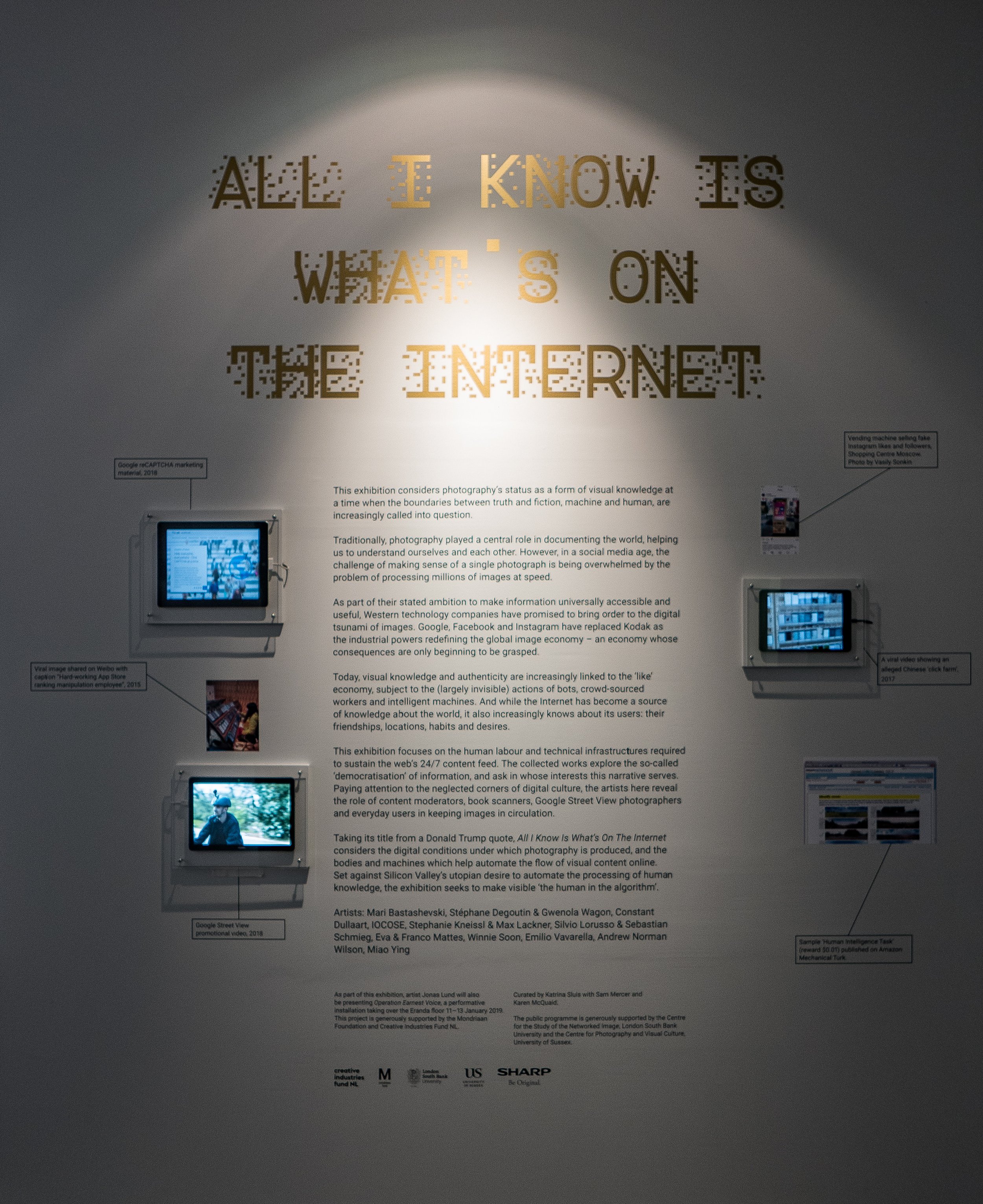 This was not a typical photography exhibition in the sense of the images being visually or aesthetically stimulating but it was certainly thought provoking and there was a lot to take in. The image which left the strongest impression was a mind map produced for the Photographer's Gallery by Mathew Fuller and Olgia Goriunova, exploring the future role of photography which was described as a deliberately 'incomprehensible diagram' based on a Powerpoint slide from a presentation by General Stanley A. McChrystal who was quoted as saying "when we understand that slide we will have won the war"
This was not a typical photography exhibition in the sense of the images being visually or aesthetically stimulating but it was certainly thought provoking and there was a lot to take in. The image which left the strongest impression was a mind map produced for the Photographer's Gallery by Mathew Fuller and Olgia Goriunova, exploring the future role of photography which was described as a deliberately 'incomprehensible diagram' based on a Powerpoint slide from a presentation by General Stanley A. McChrystal who was quoted as saying "when we understand that slide we will have won the war"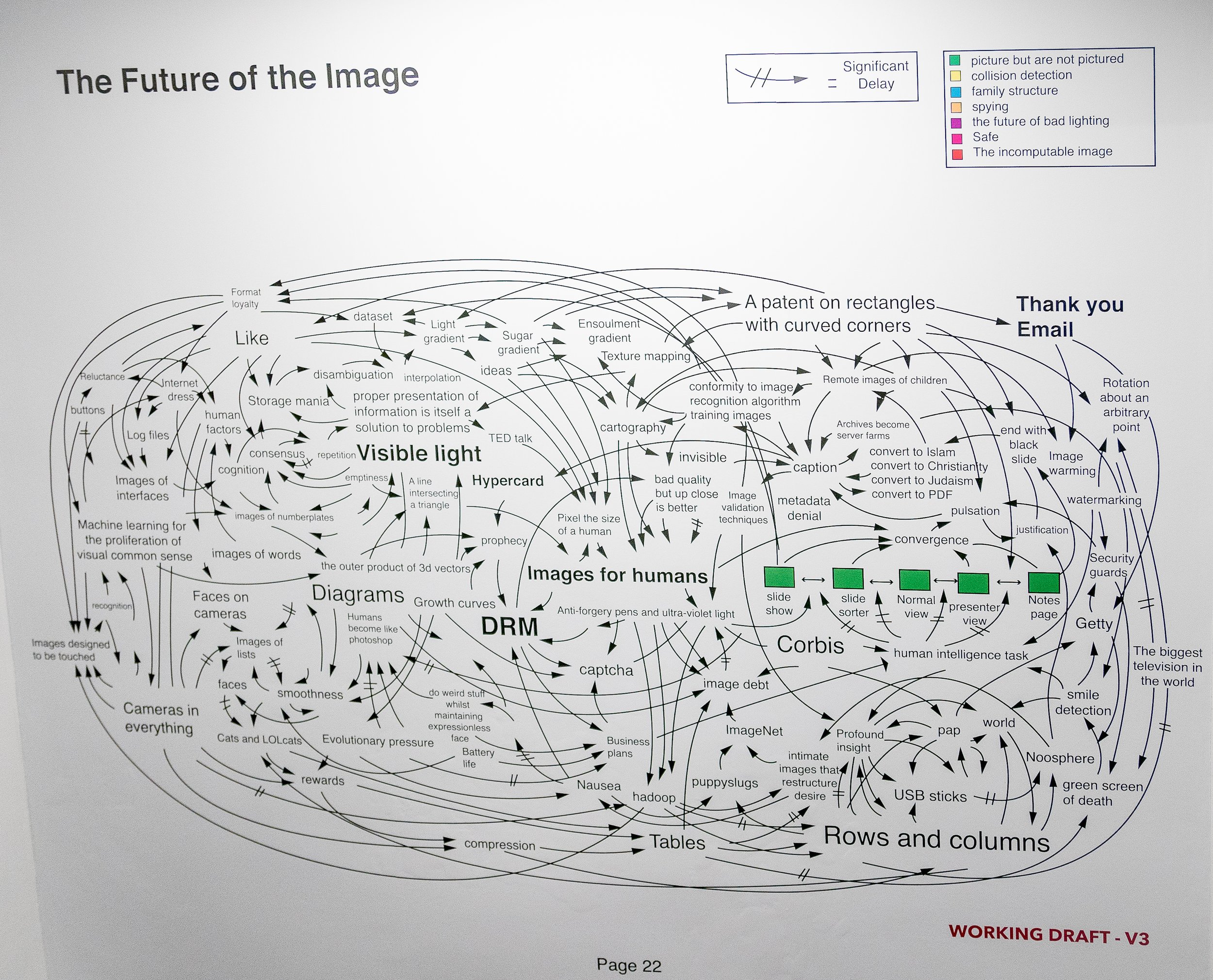 There can be no doubt that the role of still photography is changing rapidly but where it will end up in the future is anybody's guess. I left this exhibition feeling I need to engage more actively with the online world if I am ever going to make any sense of it. Perhaps the exercise of writing this blog will prove to be a good starting point.https://thephotographersgallery.org/whats-on/exhibition/all-i-know-is-whats-on-the-internethttps://thehill.com/blogs/ballot-box/presidential-races/272824-trump-all-i-know-is-whats-on-the-internetPhotographs of the installation used were taken at the exhibition by the blog author.Update 17 Feb 2019 Have recently seen the film 'WhiskyTangoFoxtrot' which was based on the memoir of the American journalist Kim Barker. A copy of the original US Army diagram on which the above image is based appears in a scene set in an army intelligence briefing room.https://www.comingsoon.net/movie/whiskey-tango-foxtrot-2016#/slide/1
There can be no doubt that the role of still photography is changing rapidly but where it will end up in the future is anybody's guess. I left this exhibition feeling I need to engage more actively with the online world if I am ever going to make any sense of it. Perhaps the exercise of writing this blog will prove to be a good starting point.https://thephotographersgallery.org/whats-on/exhibition/all-i-know-is-whats-on-the-internethttps://thehill.com/blogs/ballot-box/presidential-races/272824-trump-all-i-know-is-whats-on-the-internetPhotographs of the installation used were taken at the exhibition by the blog author.Update 17 Feb 2019 Have recently seen the film 'WhiskyTangoFoxtrot' which was based on the memoir of the American journalist Kim Barker. A copy of the original US Army diagram on which the above image is based appears in a scene set in an army intelligence briefing room.https://www.comingsoon.net/movie/whiskey-tango-foxtrot-2016#/slide/1
The Photographers' Gallery, London
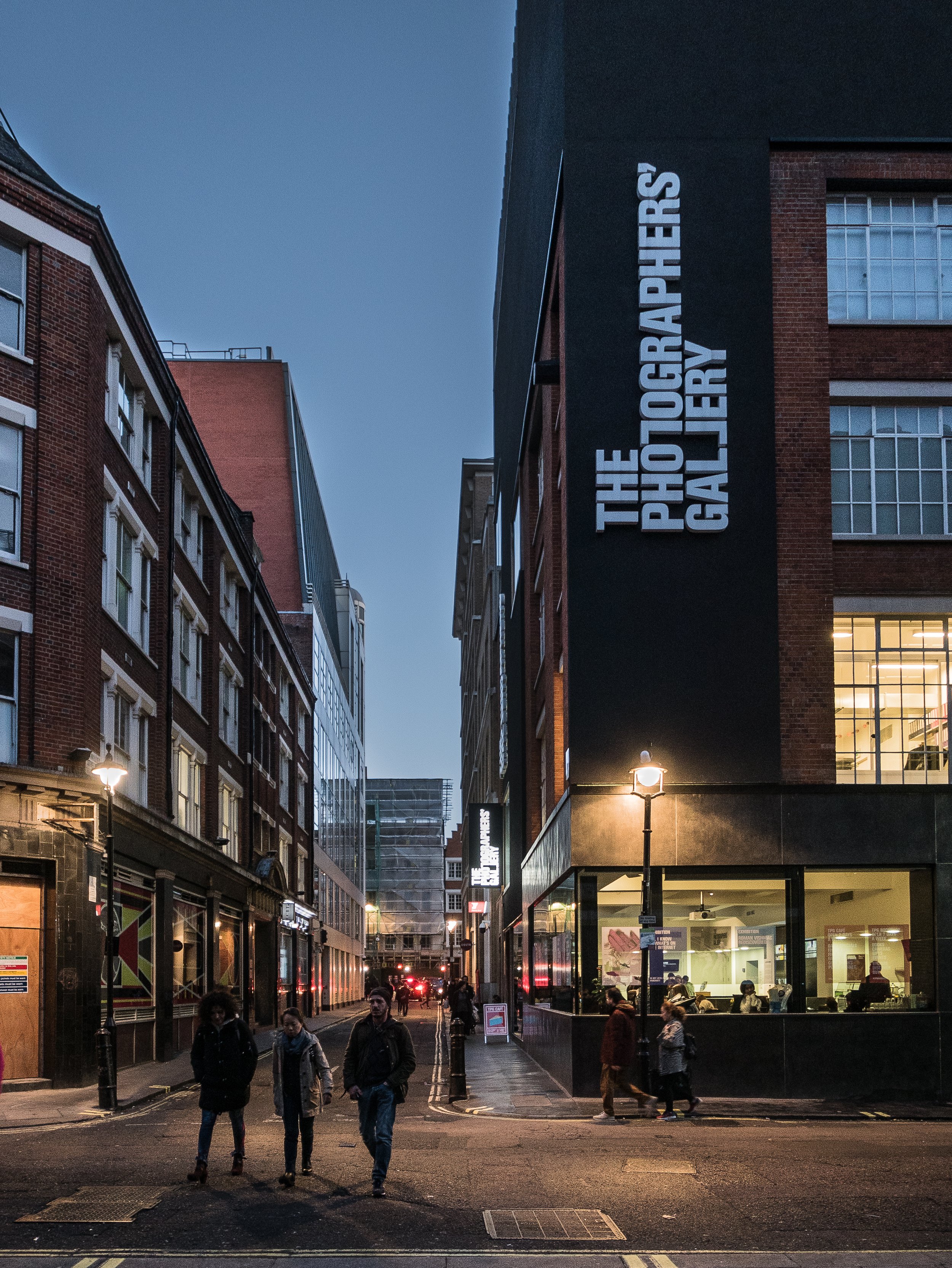 While in London last month I also visited the Photographers' Gallery where the two current exhibitions on show are 'Roman Vishniac Rediscovered' (in collaboration with the Jewish Museum of London) and 'All I Know is What's on the Internet' (a quote from Donald Trump). I will consider the second of these in a separate blog.
While in London last month I also visited the Photographers' Gallery where the two current exhibitions on show are 'Roman Vishniac Rediscovered' (in collaboration with the Jewish Museum of London) and 'All I Know is What's on the Internet' (a quote from Donald Trump). I will consider the second of these in a separate blog.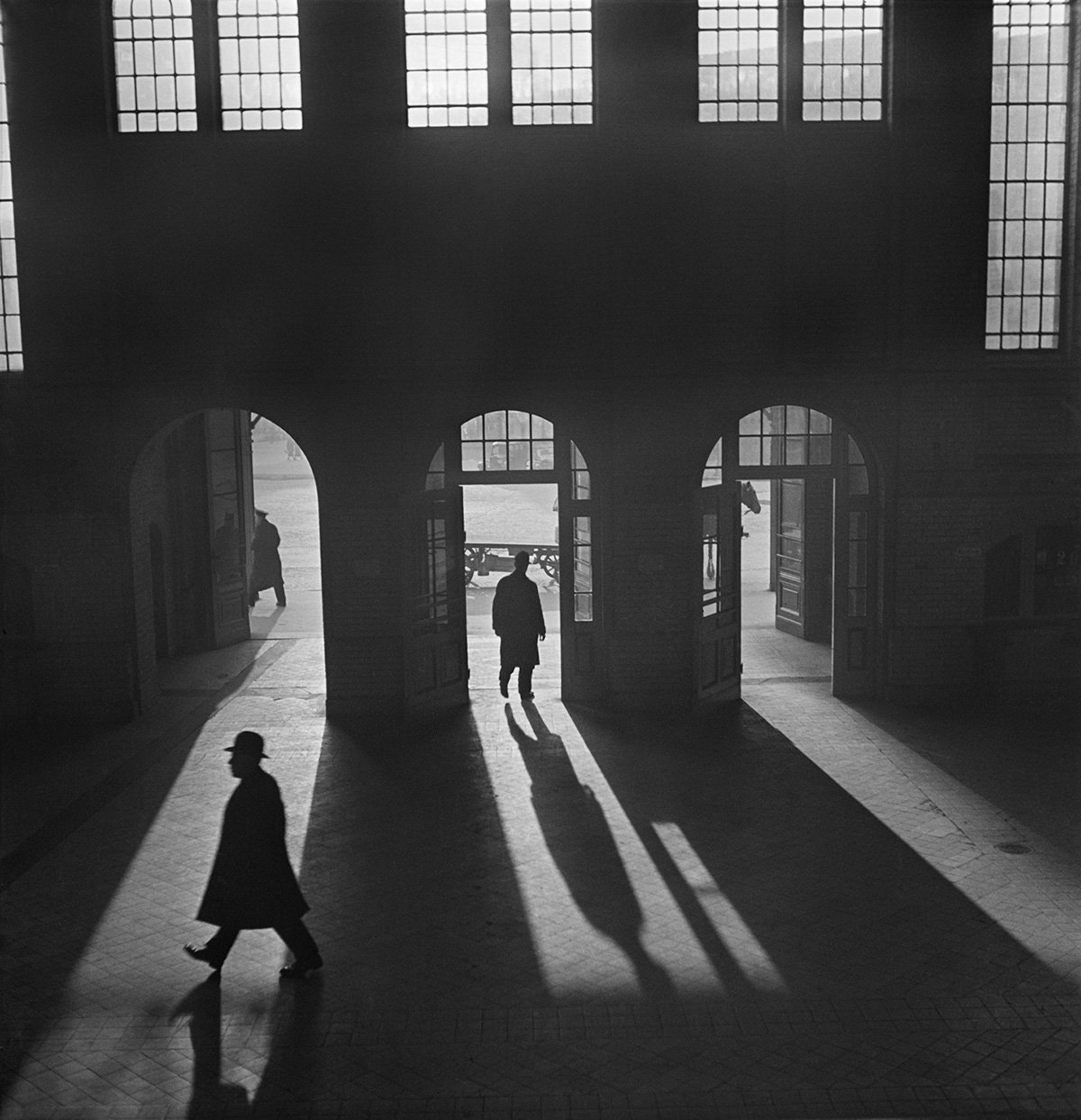 The larger exhibition, on Levels 4 and 5 of the gallery is an extensive retrospective of the Russian born American photographer Roman Vishniac (1897-1990). Vishniac had moved from Moscow to Berlin to escape the aftermath of the Russian Revolution in 1920 and his best known body of work is a large social documentary portrait of the Jewish population of Eastern Europe, mainly Berlin and Warsaw in the inter-war years, coinciding with the evolution of modernism and the rise of fascism with the resultant persecution of these communities. It is a unique document of the dramatic changes in these societies from a atmosphere open to artistic expression and social multiculturalism to the sectarianism and oppression of the Nazi regime and the populations decimated by their policies.The layout of most of the exhibition is a traditional wall mounted chronological sequence of very fine vintage (and some newly re-printed) monochrome prints, including studio and candid portraits as well as street photography and images of agricultural workers. On escaping from Germany in the mid-1930's, he moved to the USA and quickly established a successful commercial portrait studio. His other interest was the photography of microscopic life forms and his pioneering work in colour photomicrography led to an academic career and professorships in biology and fine art photography in several American universities - a selection of these images were presented in a separate room from the main exhibition as a projected slide show along with several of his publications displayed in glass cases.The quality of his work is very impressive and the social documentary work is genuinely moving but aside from this and his imaginative use of atmospheric shadows, the relevance to my own current practice is of limited relevance.www.thephotographersgallery.org/whats-on/exhibition/roman-vishniac-rediscovered
The larger exhibition, on Levels 4 and 5 of the gallery is an extensive retrospective of the Russian born American photographer Roman Vishniac (1897-1990). Vishniac had moved from Moscow to Berlin to escape the aftermath of the Russian Revolution in 1920 and his best known body of work is a large social documentary portrait of the Jewish population of Eastern Europe, mainly Berlin and Warsaw in the inter-war years, coinciding with the evolution of modernism and the rise of fascism with the resultant persecution of these communities. It is a unique document of the dramatic changes in these societies from a atmosphere open to artistic expression and social multiculturalism to the sectarianism and oppression of the Nazi regime and the populations decimated by their policies.The layout of most of the exhibition is a traditional wall mounted chronological sequence of very fine vintage (and some newly re-printed) monochrome prints, including studio and candid portraits as well as street photography and images of agricultural workers. On escaping from Germany in the mid-1930's, he moved to the USA and quickly established a successful commercial portrait studio. His other interest was the photography of microscopic life forms and his pioneering work in colour photomicrography led to an academic career and professorships in biology and fine art photography in several American universities - a selection of these images were presented in a separate room from the main exhibition as a projected slide show along with several of his publications displayed in glass cases.The quality of his work is very impressive and the social documentary work is genuinely moving but aside from this and his imaginative use of atmospheric shadows, the relevance to my own current practice is of limited relevance.www.thephotographersgallery.org/whats-on/exhibition/roman-vishniac-rediscovered
Viviane Sassen
Hepworth Gallery Wakefield, October 2018Also showing contemporaneously with the “Lee Miller and Surrealism in Britain” exhibition at the Hepworth was an exhibition of the work of the Dutch fine art photographer Viviane Sassen and for several reasons, the placement of her work in the adjacent gallery was an inspired curatorial decision. Born in Amsterdam in 1972, Vivienne Sassen initially chose to study fashion and design in Arnhem in 1990 which led to a brief period working as a fashion model while also moving to the other side of the camera to study photography in Utrecht from 1992 until 1996, then back to Arnhem where she completed a Masters degree in fine art in 1998. She has a very successful career as a fashion photographer and although she still lives and works in Amsterdam, she spent several years in her early childhood in East Africa, which subsequently proved to be a major influence on her life and her work, much of which has been made on return visits to Africa as an adult. In an interview for the exhibition catalogue she has explained that although she is now exhibiting mainly her fine art photography, she still derives much of her energy from fashion which has become an outlet for her exuberance. “In fashion I can express my extroverted side; in my more personal work, the introverted side” (Ammerlaan, 2018). In addition to the parallels with the career of Lee Miller, these more personal images often explore the ideas which are commonly associated with Surrealism – dreams, childhood memories, chance associations, eroticism and death. Her work also exploits some of the techniques favoured by the surrealist artists including the use of collage, mixed media, unexpected juxtapositions, disjointed bodies, incongruous colour combinations, mirrors with reflected or refracted light, shadows and on occasions even solarisation. While her books and previous exhibitions of her work have each been based on specific individual projects, on this occasion, working in close collaboration with the curators, the wall mounted photographs have been presented as small groups of images, each consisting of photographs chosen from several different bodies of her work over the last ten years. Through unexpected juxtapositions these individual ‘image poems’ are held together by the themes and motifs which have been features running through her work over this time.The most striking first impression of the images is her use of colour, bright lighting and graphic shapes, drawing on her experience in fashion photography as evident in the quality of her photographic technique, compositional design skills, her ability to work effectively with models and in the presentation of the images . The Hepworth is a gallery designed with large bright open spaces to accommodate the large three-dimensional sculptural works with which it is more often associated. This however also makes it an ideal setting for showcasing her work by giving the groups of wall mounted photographs plenty of ‘room to breathe’. In addition, the middle of the gallery space was occupied by a large white cube which formed the centrepiece (literally) of the exhibition. The exterior of this cube made it appear simply as additional wall space for several further groups of photographs but the interior, accessed by a light-trap door in one corner, was a large square projection room, the innovative design of which is difficult to describe clearly in words alone (hence the attached images).The two walls opposite the entrance to the space were filled by large white projection screens and the images projected onto them consisted of a rolling montage of continually moving high contrast colourful still photographs with graphic shapes, shadows and silhouettes of people, animals or trees and foliage, against backgrounds of desert landscapes, blue skies, urban facades or tarmac roads with lane bright markings. The images projected on the left hand wall flowed across the screen from right to left, while those on the right hand screen were mirror images of the same photographs simultaneously moving from left to right. The resulting appearance this created in that corner of the space was a continuously moving ‘Rorschach effect’ metamorphosis of abstract shapes, patterns and colours. The other two walls in the space were large mirrors, each with a small central aperture for the two projector beams, these mirrors reflecting in focus the continually moving projected images on the opposite walls. The effect for the viewer was further enhanced when on moving into the room they crossed the projector beams, resulting in their own shadows interacting with the shadows and silhouettes in the photographs, such that they effectively became part of the evolving images. (I did say it was difficult to explain in words). The degree of technical precision required to achieve the synchronisation of this installation is itself a major achievement and to combine this with the thought-provoking imagery it produced can only be described as an artistic triumph.My initial interest in visiting this exhibition, in relation to my own work, was stimulated by the little I already knew about her work with shadows on desert sand to create abstract compositions, using mirrors and coloured gels. The complex themes explored in her figurative imagery show that this is the work of a mature, engaged artist and the ground-breaking centrepiece projection installation produced a contemporary surreal experience, which lifted this exhibition to an entirely different level. Although I had previously only associated surrealism with the movement active in the period between the two world wars and into the 1950's, I am now more aware of its lasting influence and continuing relevance to the present time.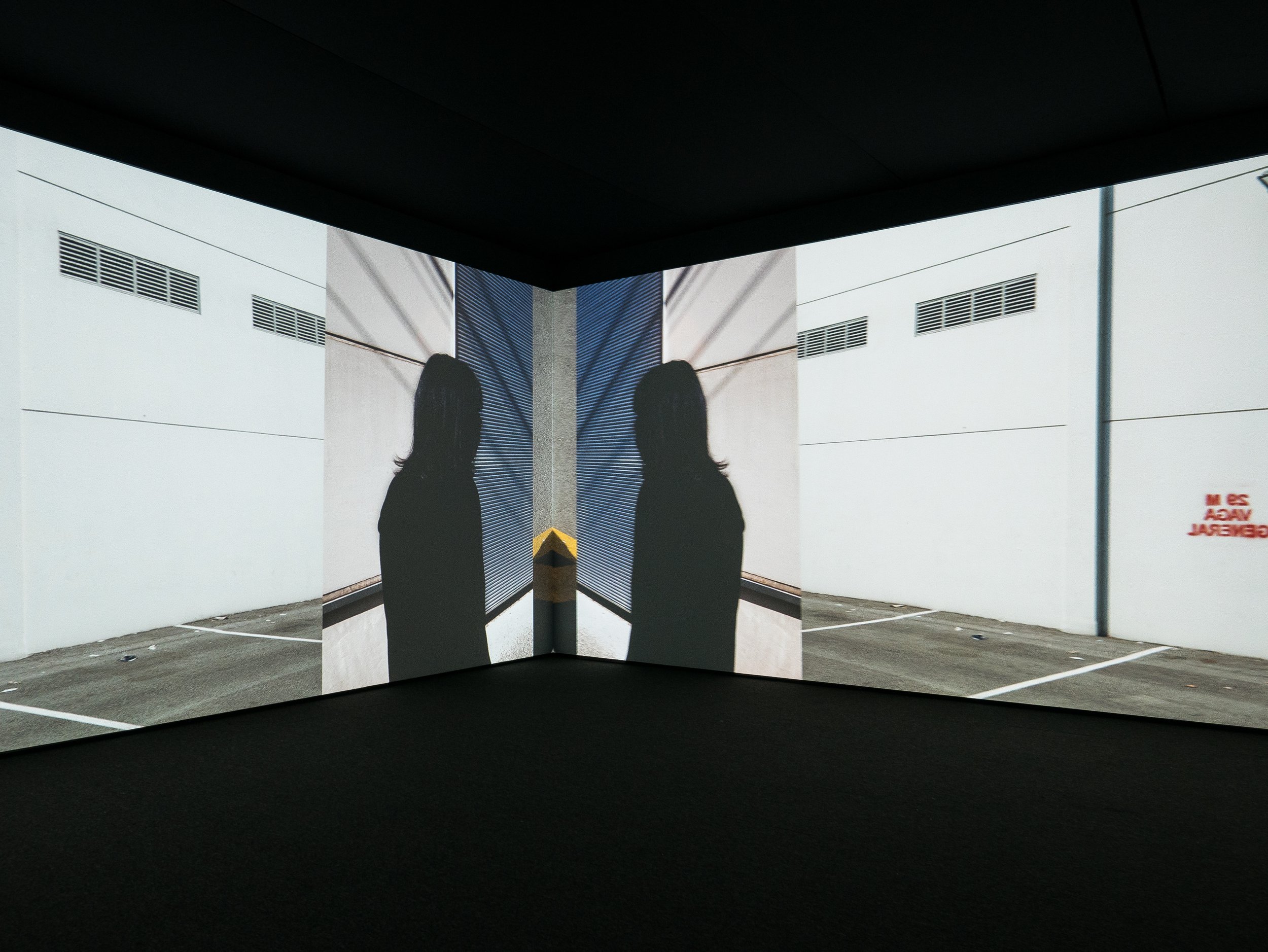
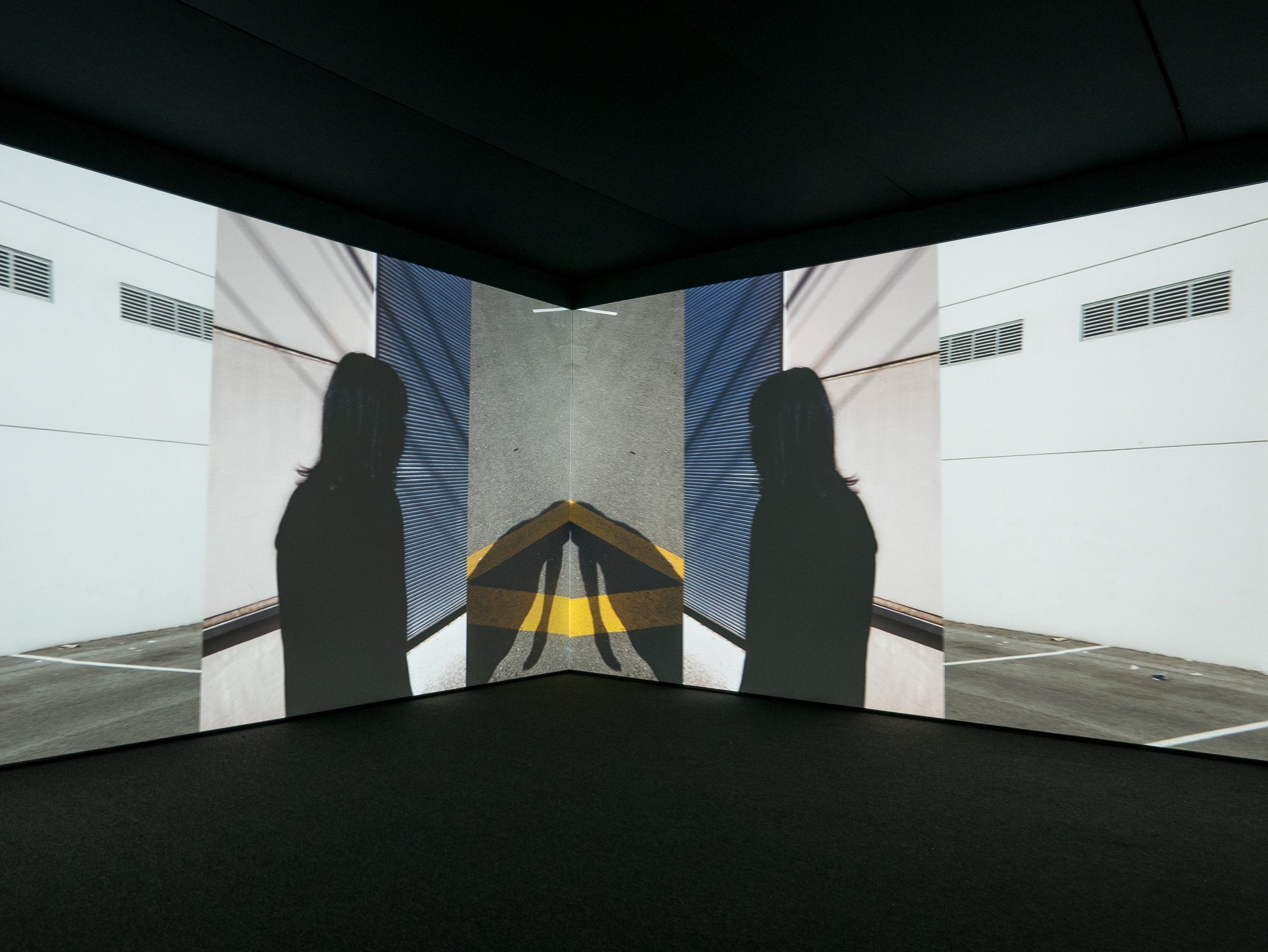
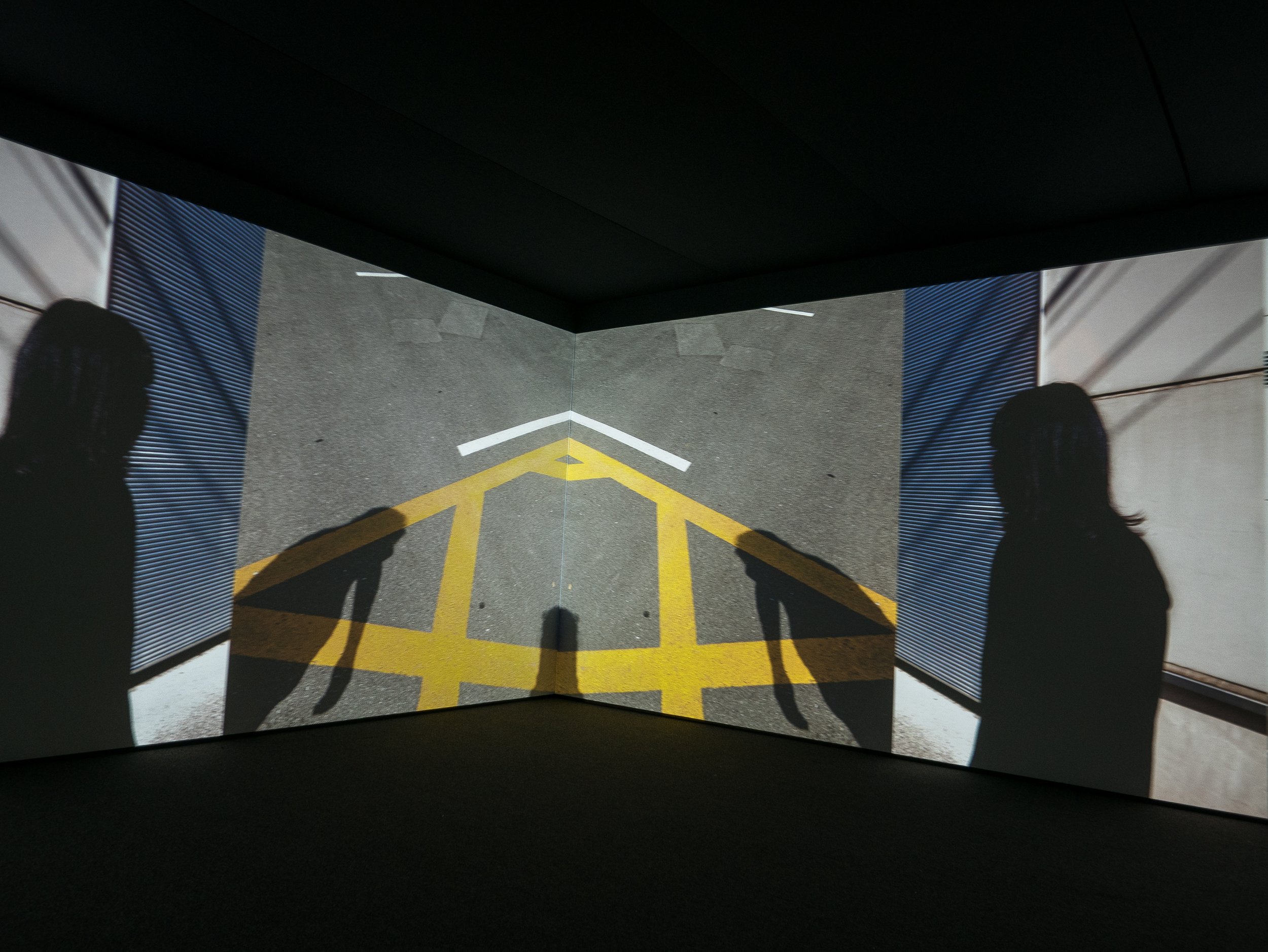
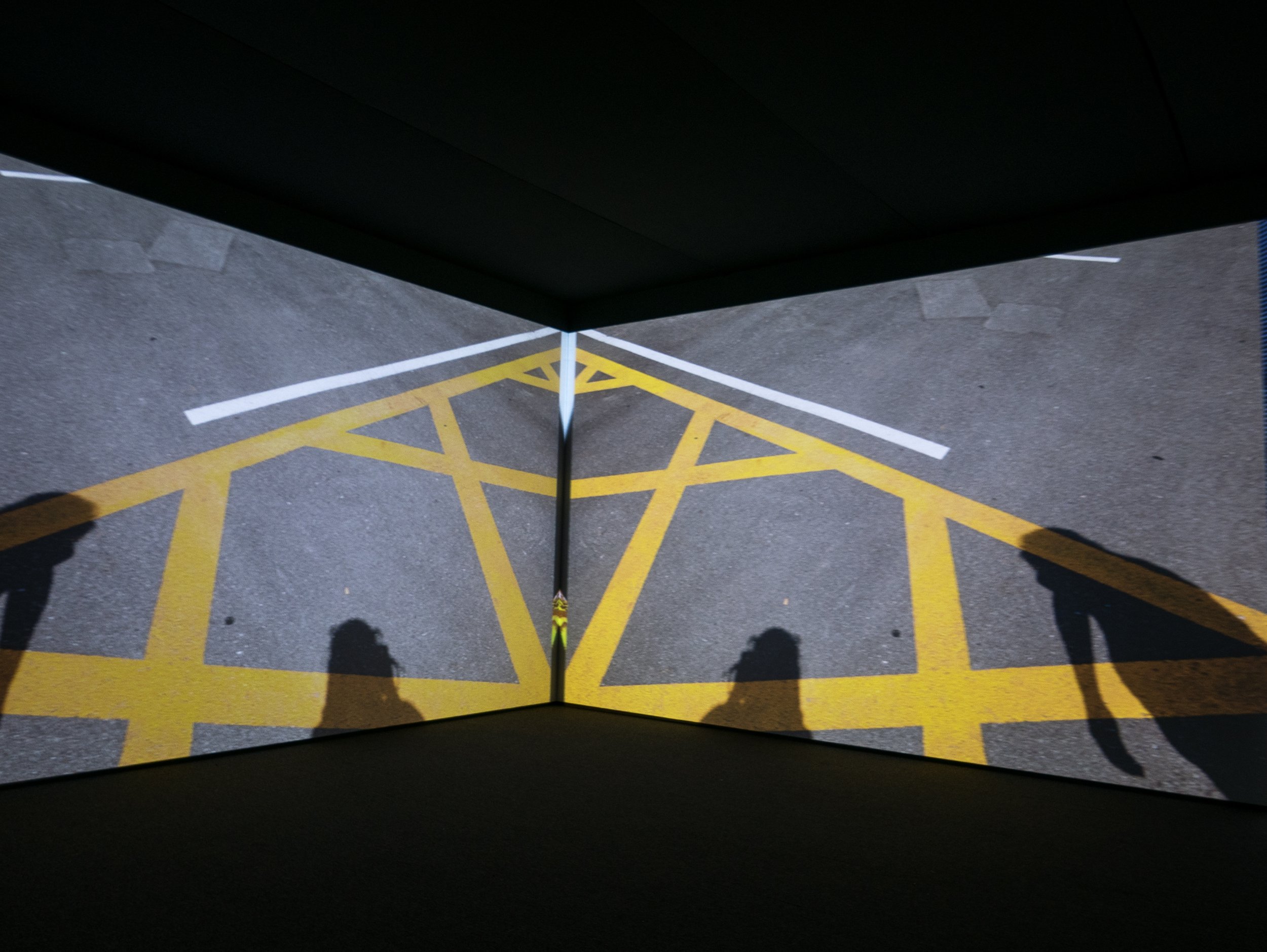
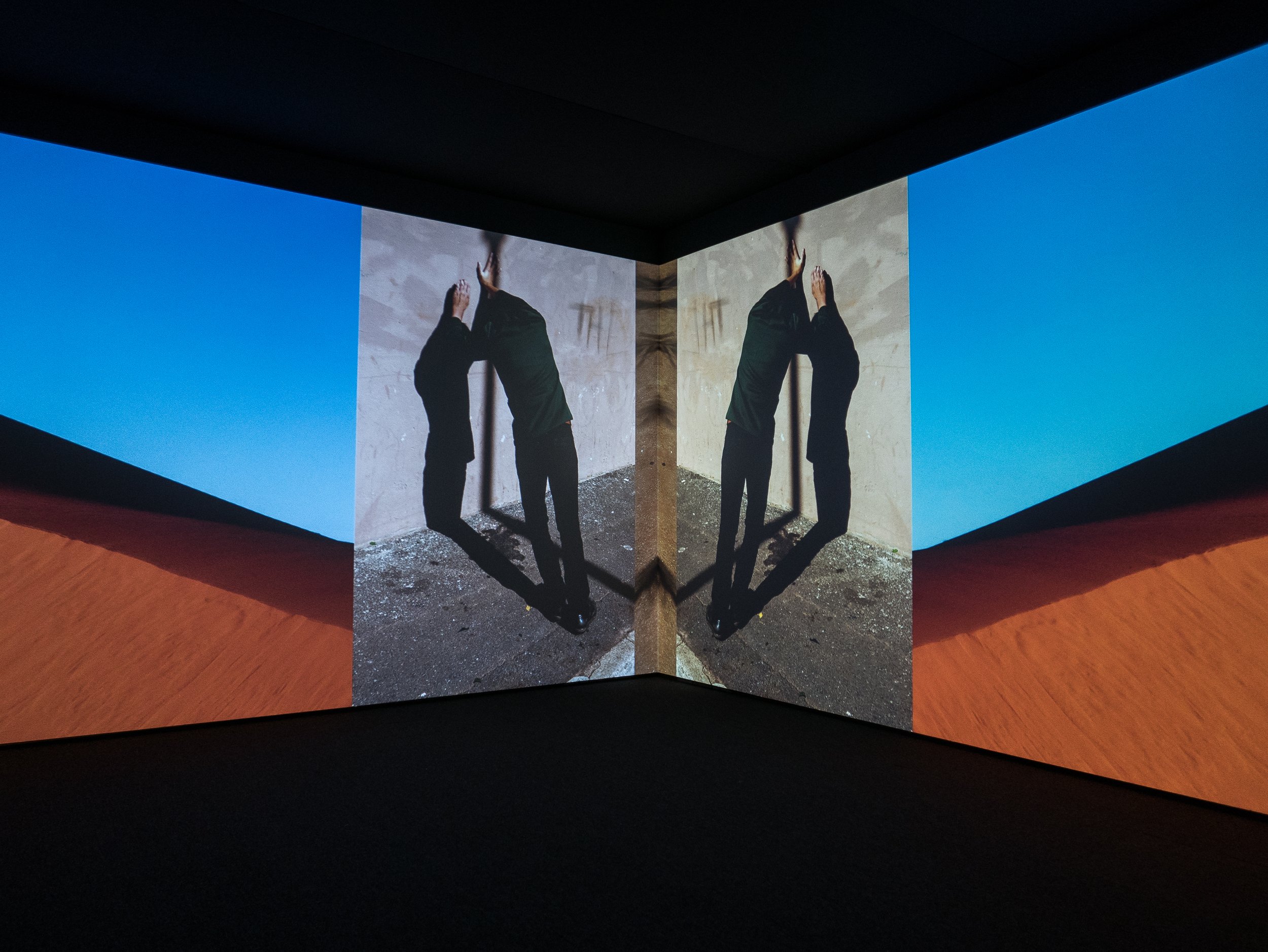
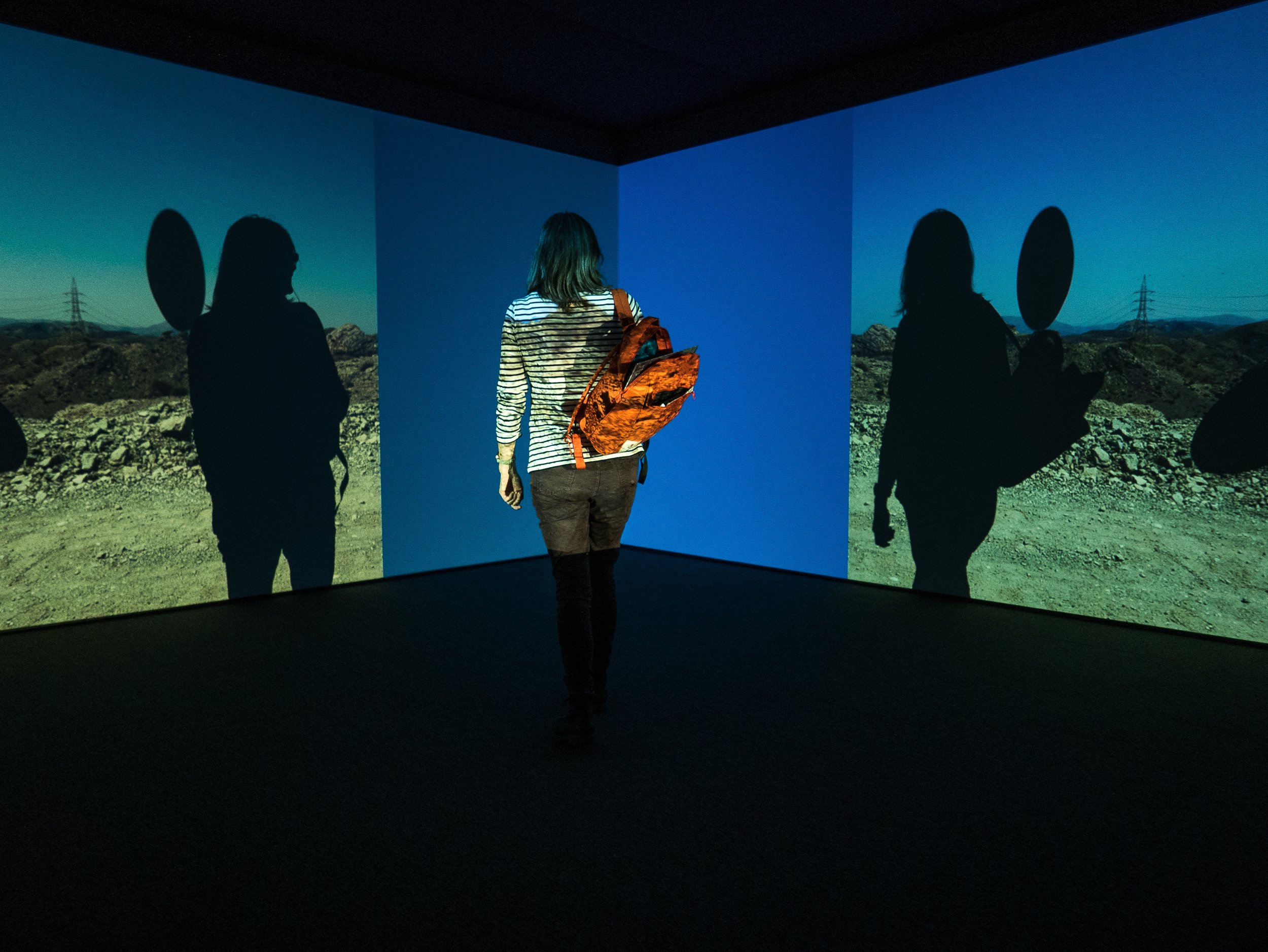 Ammerlaan R. ‘A Shy Exhibitionist: the Loss and Longing of Viviane Sassen, Photographer and Artist’, In: Hot Mirror Ed. Holtz C., Prestel Verlag, Munich London New York, 2018.https://www.vivianesassen.com/news/https://www.wefolk.com/artists/vivianne-sassen/information
Ammerlaan R. ‘A Shy Exhibitionist: the Loss and Longing of Viviane Sassen, Photographer and Artist’, In: Hot Mirror Ed. Holtz C., Prestel Verlag, Munich London New York, 2018.https://www.vivianesassen.com/news/https://www.wefolk.com/artists/vivianne-sassen/information

